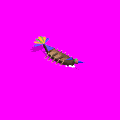W.i.n.t.e.r said:
The Maya knew him as Kukulkán; the Quiché as Gukumatz. Civilizations worshiping the Feathered Serpent included the Olmec, the Mixtec, the Toltec (latter two having absorbed the Olmec), the Aztec, and the Maya. While first aparitions of the name date back to the Toltecs and Mixtecs the Mayas only started to venerate Quetzalcoatl in turn with the Aztec expansion towards the Yucatán Valley and subsecuent Aztec foreign rule.
I'll see if I can straighten this out a bit, as there are a few errors here. Perhaps TheLastConformist will show up to assist, as he is also evidently quite familiar with the subject and perhaps a bit more eloquent than I.
The Olmec didn't pass on the feathered serpent to anyone. They worshipped a werejaguar deity known as the celt god, so named because his idols resemble a stone axe known as a celt axe. (Nothing to do with the Celts). If they did worship Quetzalcoatl it would have been quite late in their history, and it would have been introduced by the Toltec or another Nahuatl group.
The Toltec originated the god, as far as we know. The Toltec had a huge trading empire which passed elements of their culture throughout the Nahuatl speaking cultures around the north of Mexico.
At some point, a group of Toltec colonized the Yucatan in the area around Chichen Itza. They founded an imperialistic state known as the Mayapan Confederacy, which spread their culture throughout the Yucatan lowlands of the postclassic Mayans. Religious motifs such as the feathered serpent and the reclining figures known as chac mools are almost identical in both Tula, the capitol of the Toltec, and Chichen Itza, the center of Mayapan. You are correct about the Mayan name for the feathered serpent, which is Kukulcan. But it was not introduced by the Aztec, as feathered serpent worship was most prevalent only in areas of the former Mayapan Confederacy, far beyond the limits of Aztec domination, and some time before the Aztec had penetrated Mayan territory.
Around the 12th century, the Toltec fell to the first of several migrations of Chichimec barbarians from the arid lands to the north. The first wave of these migrants inhabited their city of Tula, and took on the culture and civilized arts of the people they had displaced. These neo-Toltecs continued the culture of those they had displaced for a time, but at a lesser level. Later migrations from Chichimec regions included the Aztecs, who came to dominate the Valley of Mexico and had extensive contact with the neo-Toltec group. They adopted Quetzalcoatl as they adopted many other facets of Toltec culture. They regarded the Toltecs in much the same way as medieval peoples in Europe regarded the Romans, a highly civilized people from whom they had learned all their civilized arts. However, in time, the Aztecs grew quite powerful, and eventually invaded and conquered Tula. The neo-Toltecs revolted fiercely several times, and the Aztecs eventually massacred the inhabitants. So great was the destruction, that the Aztecs created a myth that their god of war, Huitzilopochtli, had personally battled Quetzalcoatl himself in Tula. The destruction was explained as the result of this battle, in which Quetzalcoatl was defeated and vowed to return and slay Huitzilopochtli. The latter appeased Quetzalcoatl worshippers in the Aztec city of Tenochtitlan, and the Quetzalcoatl of the Aztecs became a god who symbolized both the giving of civilized arts (imagine, a sort of Prometheus figure) but also a deity of eventual retribution upon the Aztecs. In an odd coincidence, Cortes appeared the year Quetzalcoatl was prophecied to return, and his uniform bore an odd resemblance to Quetzalcoatl's appearance, which was that of a snake with a frilly collar of feathers about his head, and shining scales of obsidian. Not unlike the frill-necked, metal-armoured appearance of Cortes and his officers.













